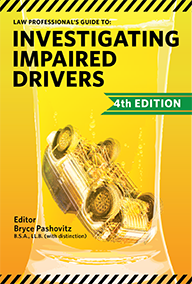Anyone found inebriated and behind the wheel with a present ability to drive will – and should – almost invariably be convicted. It hardly follows, however, that a conviction in these circumstances is, or should be, “automatic”. The accused may escape conviction by adducing evidence that the vehicle was inoperable. Likewise, use of the vehicle for a manifestly innocent purpose should not attract the stigma of a criminal conviction.
R. v. Boudreault, 2012 SCC 56
The facts in Mr. Boudreault’s case were very unique. The taxi driver who was called to pick up an intoxicated Mr. Boudreault was the person who called the police. While waiting for his taxi to come on a cold February morning, Mr. Boudreault got into his truck, started the engine and turned on the heat. He then fell asleep behind the wheel and that is where he was when the taxi driver arrived. Mr. Boudreault was acquitted at trial and the Supreme Court of Canada upheld the acquittal.
As always, “the investigation is never over”. Warned statements from care or control suspects are useful: When did the suspect arrive in this location? Where did the suspect intend to go? How did the suspect intend to get there? Also, when faced with an inoperable vehicle at the scene, the investigation can turn to determining how the vehicle got there in the first place which can lead to a possible impaired operation charge.
 Saturday, December 1, 2012 at 7:49PM
Saturday, December 1, 2012 at 7:49PM 